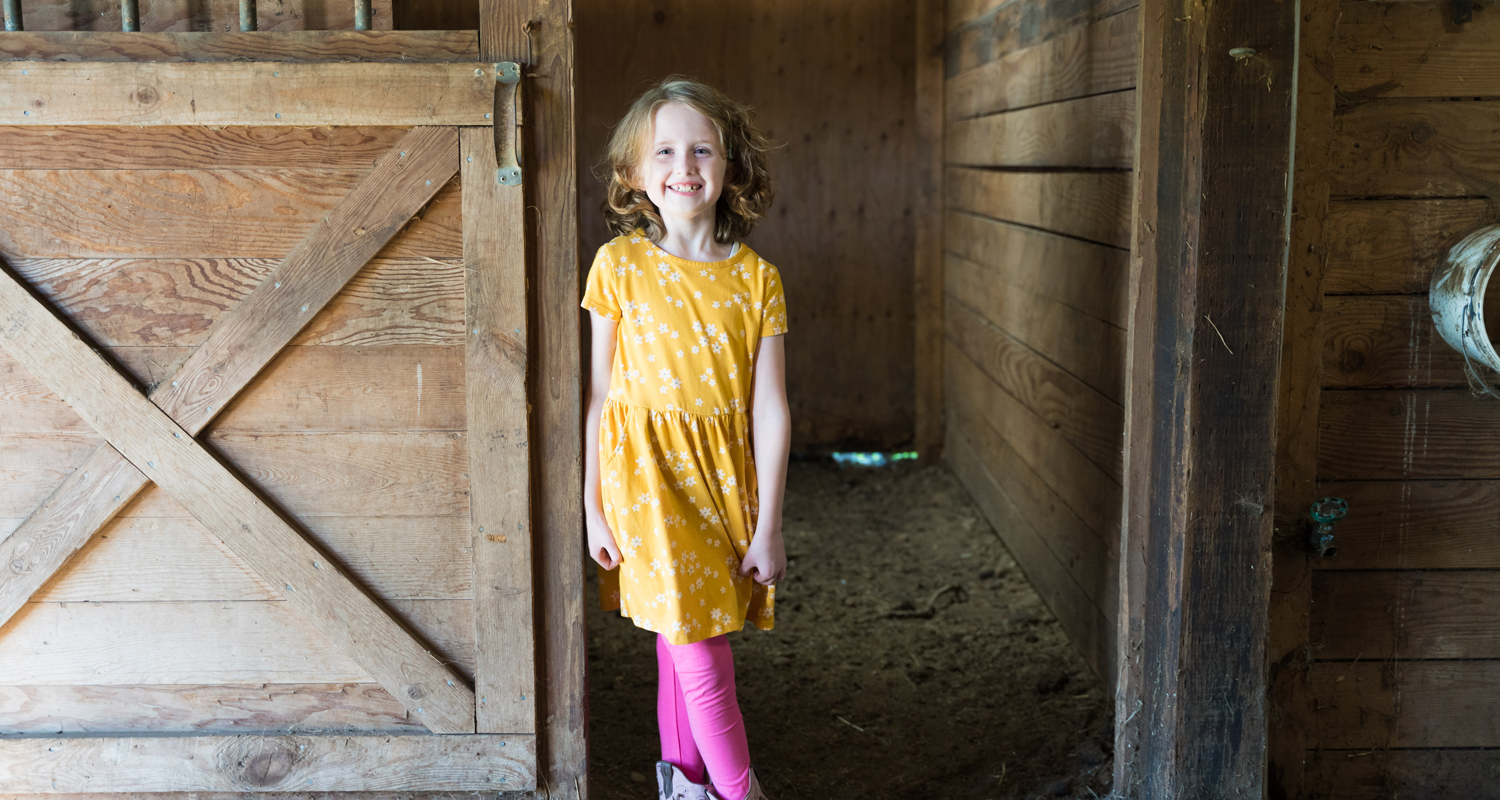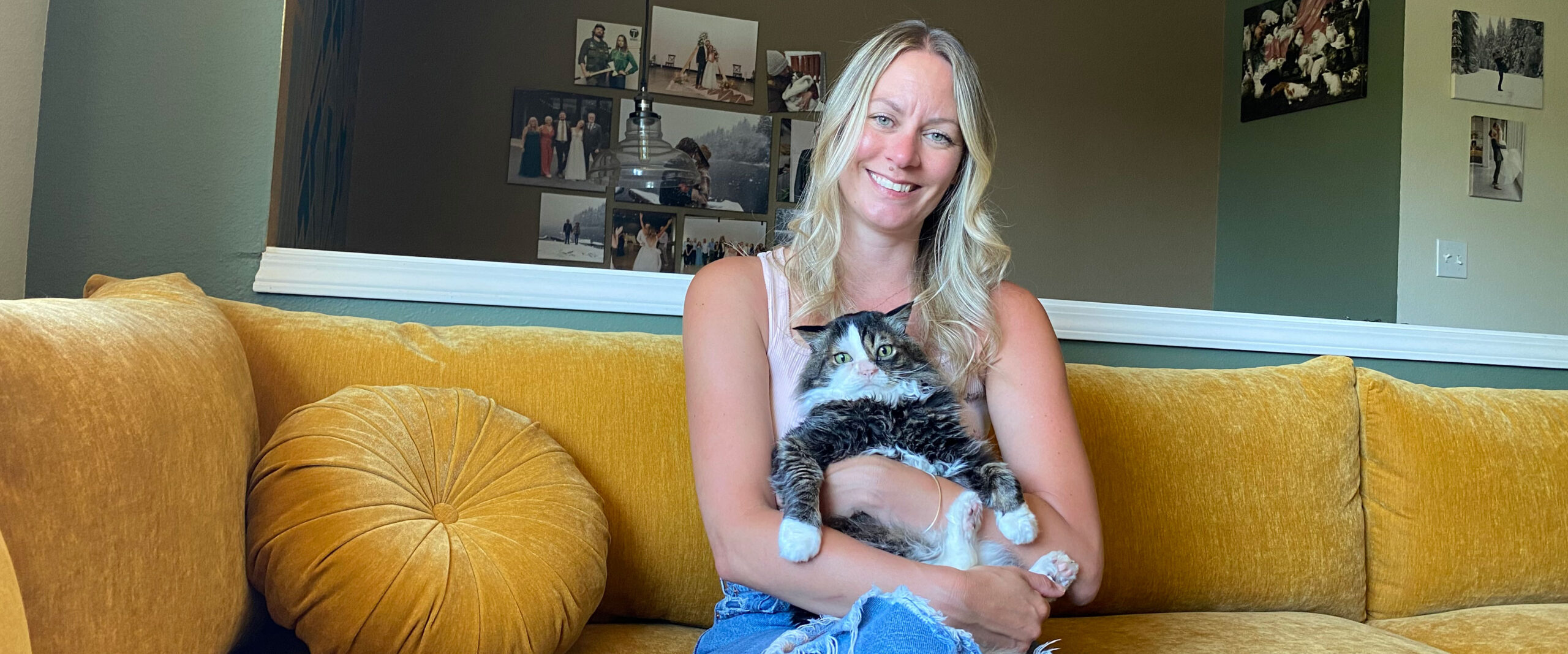Jessica and Max Butler welcomed their first child, Penelope, into the world at a hospital near their home in Aumsville, Oregon, on June 4, 2014.
But the heart murmur the physician found shortly after Penelope’s birth would be the first of many issues she’d develop.
At three weeks old, Penelope began vomiting the high-calorie formula she was placed on to help increase her weight. Jessica and Max rushed her to the emergency department in nearby Salem, Oregon, where they learned Penelope was severely anemic, with a low number of red blood cells that can cause fatigue, dizziness and a rapid heartbeat.
The next morning, Penelope’s pediatrician referred the family to the hematology and oncology physicians at OHSU Doernbecher Children’s Hospital. They confirmed Penelope was severely anemic, and would need to come back the next morning to receive a blood transfusion to improve her red blood cell count.
“I obviously didn’t sleep at all that night. I just sat by her crib and watched her,” Jessica said. “The situation had gone from having a happy, little baby to watching her sleep to make sure she was still alive.”
Rare version of an incredibly rare disease
Penelope’s first physician at Doernbecher was pediatric hematologist/oncologist David Tilford, MD, who was confident that, given her symptoms, Penelope had Diamond Blackfan Anemia.
Diamond Blackfan Anemia is a rare blood disorder that affects the ability of bone marrow to produce red blood cells. Symptoms can include anemia, and can also include heart and kidney defects. About 30 babies are born with Diamond Blackfan Anemia in the United States each year.
A genetic test confirmed Penelope’s RPS19 gene was mutated. Penelope’s case in particular was even more rare — her disorder also affected her white blood cell lines and reduced her neutrophils count. Neutrophils, a type of white blood cell, are important for fighting infections, which left Penelope more susceptible to becoming seriously ill.
For Penelope, something as small as a scratch on her hand could become a life-threatening situation.
“It is so important to have a specialized children’s hospital like Doernbecher because when rare situations like this come up, there is a resource of knowledgeable doctors and people who have seen this before,” Jessica said. “Even with an incredibly rare disease, someone like Dr. Tilford says, ‘I’ve seen this before.’”
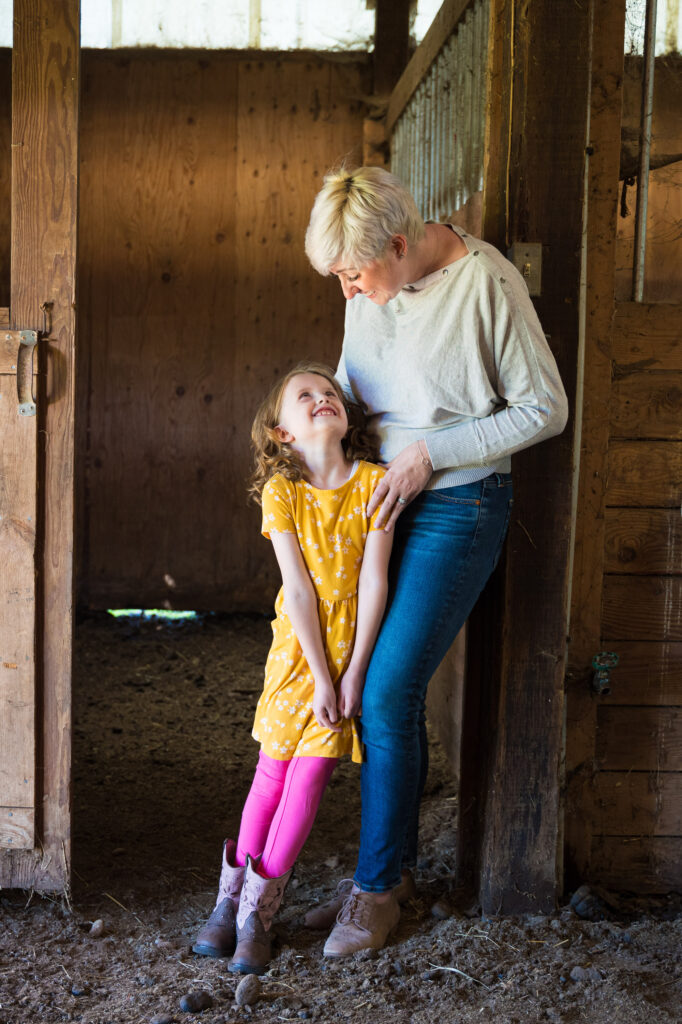
“Penelope was a trooper. She never cried, and she’d kiss me after I had to give her the shot. She’s the sweetest little person.”
Jessica, Penelope’s mom
The common treatments for Diamond Blackfan Anemia are steroids and blood transfusions. Penelope received blood transfusions every three weeks, and was usually hospitalized with a fever and neutropenia about every 24 days. Neutropenia can increase vulnerability to infection. When combined with a fever, Penelope might not have been able to fight off an infection.
By the time Penelope was one year old, she was becoming resistant to the antibiotics she frequently needed to take. Her white blood cell count remained dangerously low, so she needed painful shots called G-CSF every night to stimulate their growth.
“Penelope was a trooper. She never cried, and she’d kiss me after I had to give her the shot,” Jessica said. “She’s the sweetest little person.”
The treatments were only mildly successful: By the age of two, Penelope’s white blood cell count hadn’t increased. Her appetite was declining as well. She was undergoing physical therapy to gain back muscle.
In July, Penelope’s body stopped making white blood cells altogether. This meant her body eventually wouldn’t be able to fight off any infection.
“We started with a really rough, life-threatening situation to thinking that if she was still with us by Christmas, we would be lucky.”
Jessica, Penelope’s mom
The only option left: a bone marrow transplant, a procedure that infuses healthy stem cells into your body to replace diseased bone marrow.
“You have a bone marrow transplant when your odds of survival are less than the transplant,” Jessica said. “We started with a really rough, life-threatening situation to thinking that if she was still with us by Christmas, we would be lucky.”
Life-saving care
The bone marrow transplant, already a complicated procedure, was made even more complex because of Penelope’s compromised liver function. Because she’d had so many blood transfusions in a short period of time, extra iron had accumulated in her liver.
Penelope’s Doernbecher care team had what was best in mind for her, so they recommended she have her bone marrow transplant at Seattle Children’s Hospital, where they had a trial drug available that could help eliminate the risk of liver complications. The Butlers moved to Seattle for roughly four months while Penelope received her bone marrow transplant.
“Doernbecher is our family,” Jessica said. “We’ve spent her entire life here. It was so difficult to make the decision to go anywhere else.”
“To be told you’ll be lucky if she’s here in December, and to have her now is so incredible.”
Jessica, Penelope’s mom
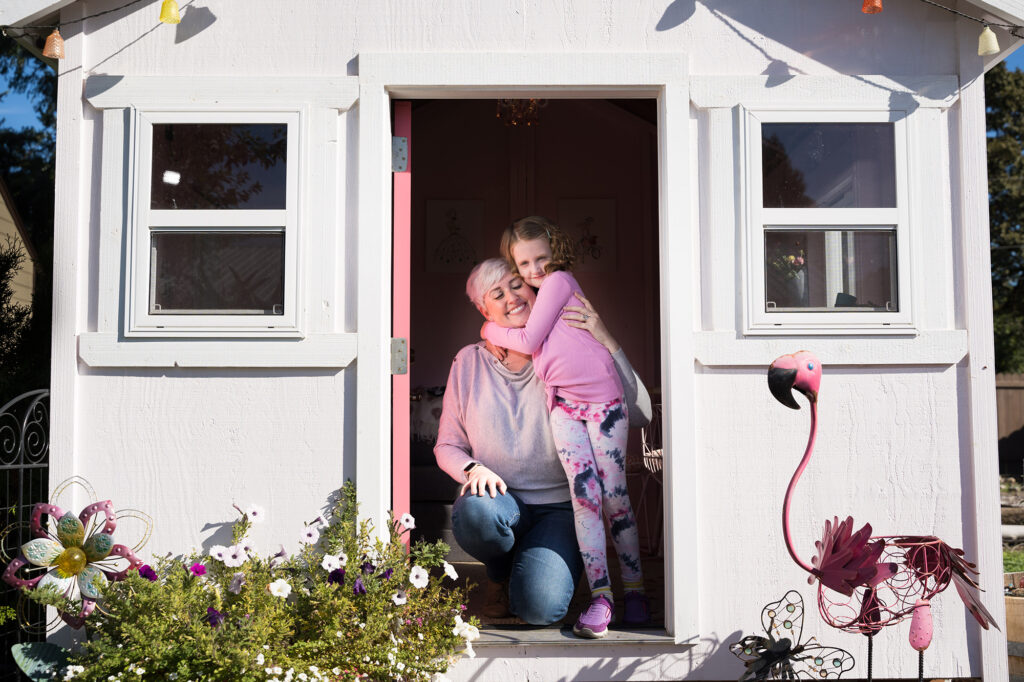
After Penelope was released, she developed Graft vs. Host disease, a very rare condition that occurs when donor bone marrow attacks the recipient.
Penelope returned to Doernbecher for steroids and immunosuppression drugs to help control the disease. She was then eligible for a clinical trial program at Doernbecher that infused cells into her body to help boost her immune system. She had eight infusions over four weeks. During that time, Penelope’s rash gradually disappeared from her body.
“To be told you’ll be lucky if she’s here in December, and to have her now is so incredible,” Jessica said. “Thank you doesn’t even begin to describe how I feel with everyone at Doernbecher and everything that was done for us.”
A normal, healthy life
By the age of three, Penelope had more than 50 blood transfusions and 30 hospitalizations. Since her bone marrow transplant and success with the clinical trial, she has shown no symptoms of Diamond Blackfan Anemia. Although she is not cured because the gene is still mutated, her care team expects her to continue to live a normal, healthy life.
“I always felt like Doernbecher was the best place Penelope could possibly be,” Jessica said. “We are so incredibly lucky to live close enough to a place like Doernbecher. They became our family there — we were around people we knew and loved.”
With a majority of her first three years of life spent in the hospital, Penelope is now making the most of her time. Today, Penelope is a smart, courageous 7-year-old who loves camping, playing in the water and creating art.


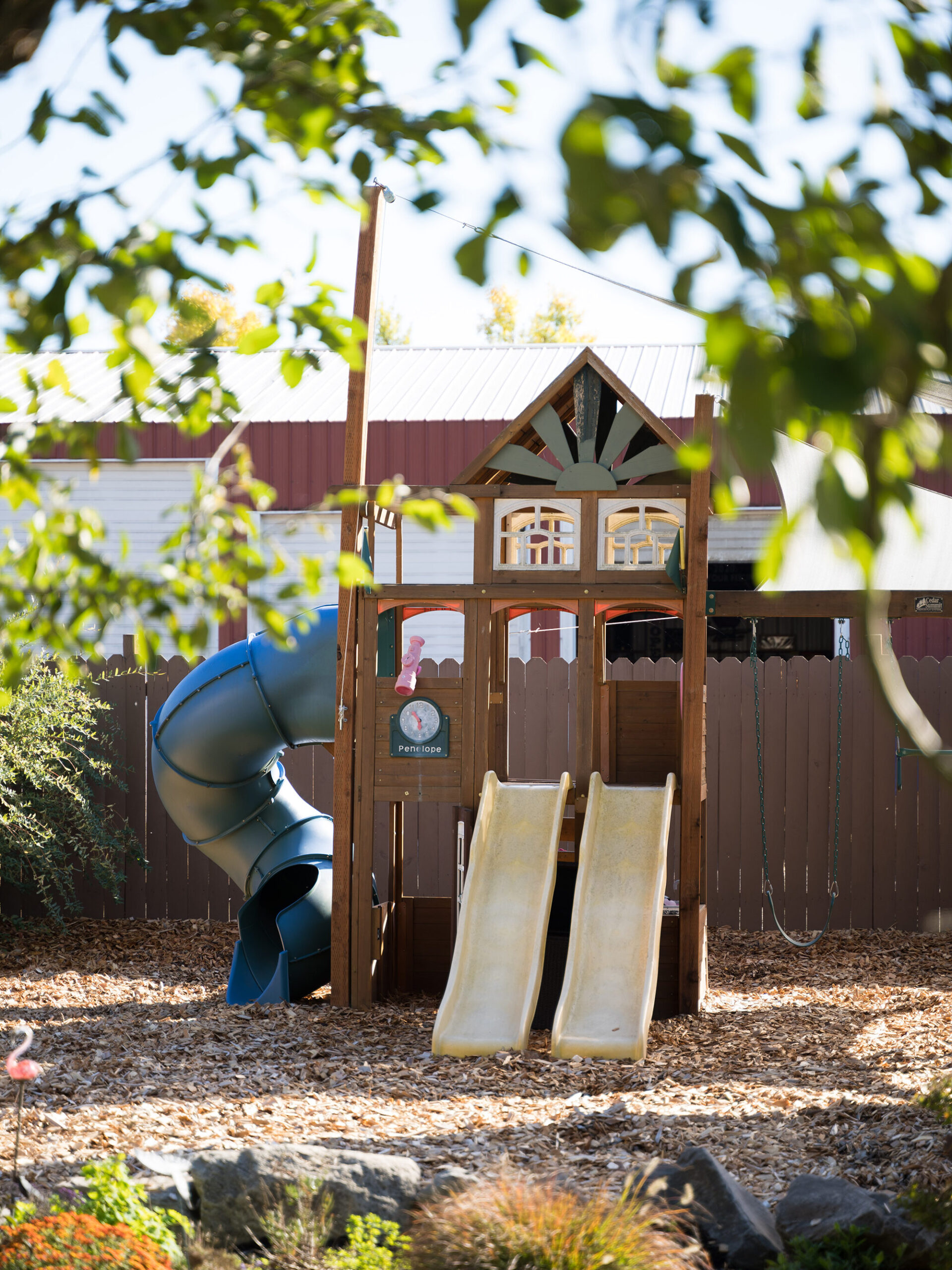
“Penelope has always been a brave little person,” Jessica said. “She’s also a very stubborn little person, and I think that’s why we are here today. There was no way her disease we going to stop her from doing what she wanted to do.”
Penelope also started second grade this year, and loves being around other kids. Her favorite part of school is seeing all of her friends, and her favorite subject is math.
“There’s not a statistic in the world that says Penelope should be with us today, but I believe she is because of the incredible doctors at Doernbecher,” Jessica said.
